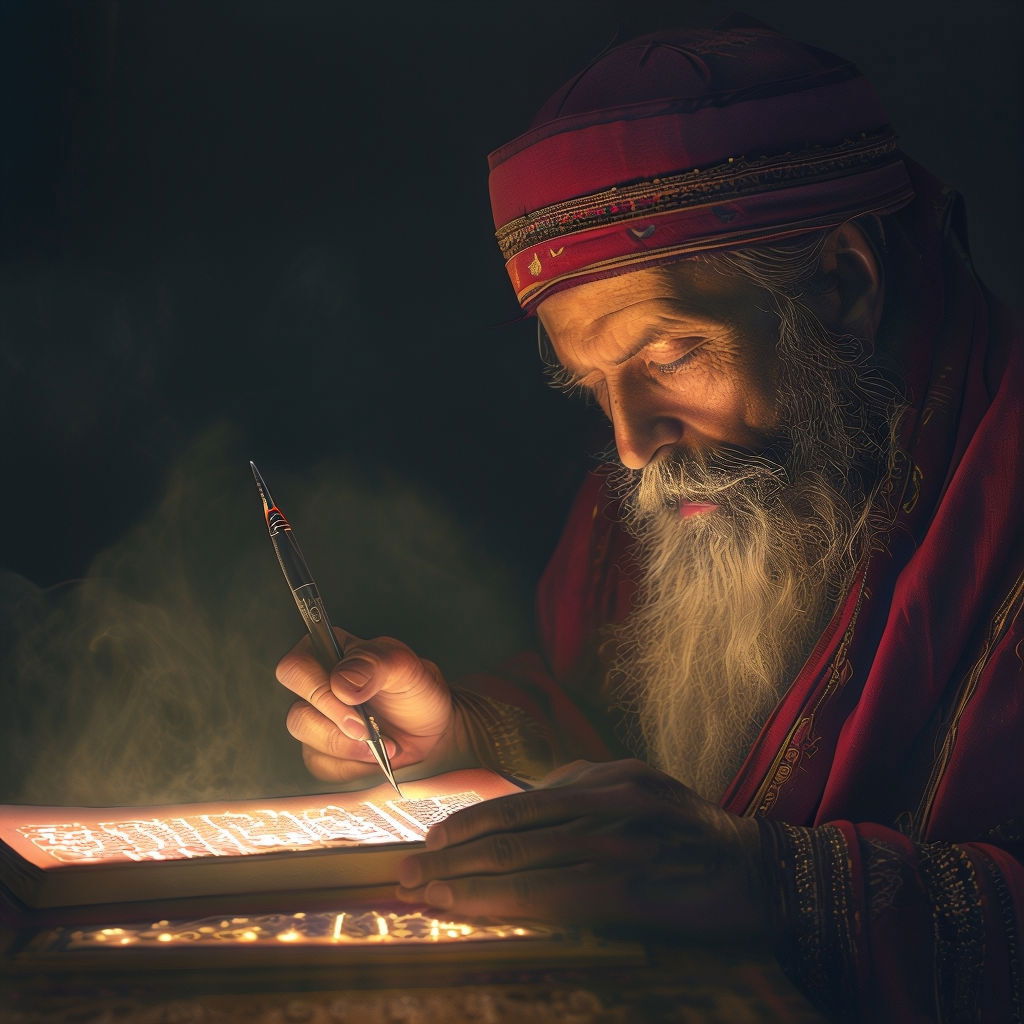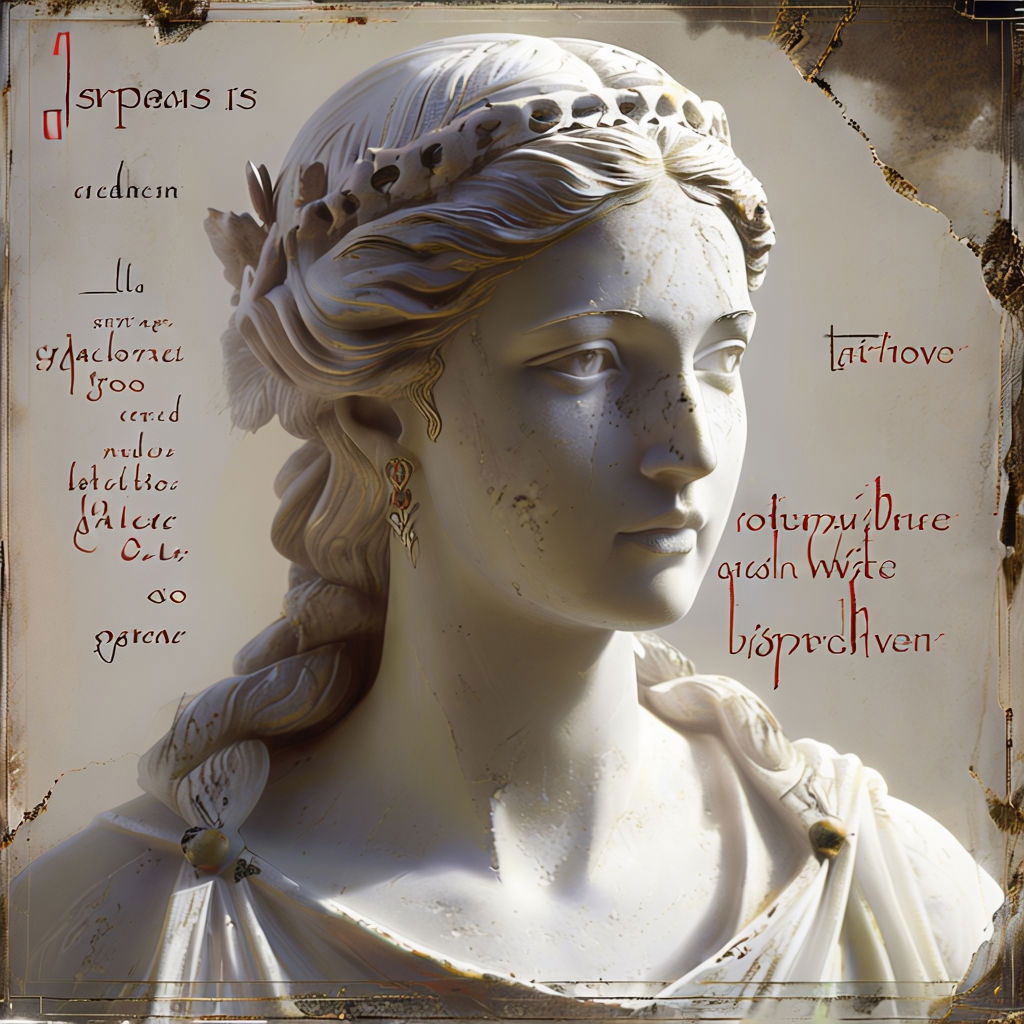The Mythopoetic Impulse and the Creative Arts
Bridging Myth and Imagination In Poetry and Literature
A LIFE AND LITERATURE ARTICLE BY TEGEDAO OF COURSE
In the book The Mythopoetic Impulse, Bradley Olson devotes considerable attention to the rich interplay between the mythopoetic and the creative arts, emphasizing how poetry, literature, and other forms of artistic expression can serve as modern vessels for engaging with mythic themes. Olson argues that these artistic forms do more than entertain—they tap into the same archetypal sources that generate myths, creating spaces where deep, often unconscious, aspects of the human experience can be explored and expressed.
Mythopoesis in Poetry and Literature

Central to Olson’s exploration is the idea that poetry and literature possess a unique capacity to bring mythic themes into contemporary consciousness. He suggests that the process of mythopoesis—the creation of myth—finds a natural outlet in the poetic and literary imagination. This is because poetry and literature, like myths, operate through metaphor, symbolism, and narrative structures that connect us to universal themes and patterns.
Olson notes that the rhythm, language, and imagery of poetry often mirror the structures found in myth. Just as myths speak through symbolic images and archetypal figures, so too does poetry employ metaphor and symbolic language to evoke deep emotional and psychological responses. For example, a poem might evoke the journey of a hero, the descent into a mysterious underworld, or a transformation through suffering and revelation—mirroring ancient mythic motifs that have been passed down through generations.
By engaging with poetry, Olson believes, individuals can experience a kind of modern-day myth-making, where the reader and writer alike participate in the creation of meaning. This allows them to reconnect with the archetypal undercurrents that shape their psyche. Olson emphasizes that poetry’s ability to distill complex feelings into concentrated, evocative language enables it to capture the timeless quality of myths, bringing the mythopoetic into the present moment.
Literature as Mythic Narrative
Olson extends this argument to literature, highlighting how novels and stories also draw deeply from the wellspring of mythic themes. He suggests that great works of literature often revolve around the same archetypal structures that have defined mythic storytelling throughout history. Stories of quests, transformations, tragic flaws, and encounters with the unknown—these are the narrative echoes of ancient myths that continue to resonate with readers today.
For Olson, literature serves as a bridge between the mythic past and the lived realities of contemporary culture. When we read stories that grapple with themes of identity, mortality, love, or redemption, we are engaging with the same fundamental questions that myths have sought to address. He points to the universality of these themes as evidence that literature is not merely a reflection of individual experience but a continuation of the mythopoetic tradition, adapting ancient stories to new cultural contexts.
In this way, literature becomes a means of revitalizing myths, allowing them to evolve and maintain their relevance. A modern novel might reinterpret the archetypal hero’s journey through the lens of a contemporary protagonist or transform the struggle with the shadow into a psychological drama. Olson suggests that such adaptations keep the mythopoetic alive, ensuring that these ancient patterns continue to shape and inform our understanding of the human experience.
The Creative Act as a Mythopoetic Process

Olson also explores the idea that the act of creating art—whether through writing poetry, composing music, or painting—can itself be seen as a mythopoetic process. The creative act involves delving into the unconscious, drawing forth images, symbols, and narratives that resonate with deeper truths. This process parallels the way myths emerge from the collective unconscious, according to Jungian theory.
By participating in the creation of art, individuals engage in a process similar to that of the ancient myth-makers. They become channels for archetypal energies, giving shape to the inexpressible aspects of the human experience. Olson argues that this creative process can be a form of personal myth-making, allowing the artist to confront and integrate parts of their own psyche through the symbols they produce.
This is particularly evident in the works of poets and writers who draw explicitly on mythological sources or create entirely new mythologies within their stories. Olson points to authors like William Blake, whose poetic visions are filled with mythic imagery and themes, or T.S. Eliot, who infused his poetry with references to ancient myths to grapple with modern existential crises. For Olson, such artists are modern-day myth-makers, keeping the mythopoetic tradition alive by adapting it to the needs and anxieties of their time.
The Role of the Reader in the Mythopoetic
An important aspect of Olson’s discussion is the role of the reader in engaging with the mythopoetic through creative works. He emphasizes that the reader is not a passive recipient of mythic themes but an active participant in interpreting and integrating these stories into their own experience. Just as myths invite participation through ritual and storytelling, literature and poetry invite readers to enter into a dialogue with the text, to discover the mythic resonances that speak to their own life journey.
Olson suggests that this interaction with literary works can be a transformative experience, much like engaging with myth itself. By encountering stories that reflect their own struggles, hopes, and desires, readers can gain insight into their own psychological landscapes. They can identify with the hero, the trickster, or the wanderer in ways that illuminate their own path. In this sense, reading becomes a form of mythic exploration, allowing individuals to access the deep structures of the psyche that Olson believes are central to the human experience.
Conclusion: Rediscovering the Mythic through Art

Bradley Olson’s The Mythopoetic Impulse offers a compelling vision of how poetry, literature, and the arts can serve as modern avenues for reconnecting with the mythopoetic. By highlighting the parallels between mythic structures and the creative imagination, he shows that the arts are not only forms of expression but also powerful tools for engaging with the mysteries of existence. Through their use of symbolism, narrative, and metaphor, poetry and literature invite us to explore the archetypal depths of our own minds, offering a path toward self-discovery and a deeper connection to the mythic dimensions of life.
Olson’s work encourages us to see the arts as more than aesthetic pursuits—they are spaces where the ancient and the contemporary meet, where the timeless themes of myth find new life. For those willing to engage with the mythopoetic through the lens of poetry and literature, the rewards are profound: a richer understanding of the self, a deeper sense of connection to the stories that have shaped humanity, and a renewed appreciation for the power of imagination. In this way, The Mythopoetic Impulse serves as both a guide and an invitation to rediscover the mythic through the creative arts, embracing the mystery and wonder that lie at the heart of human experience.
In The Mythopoetic Impulse, Bradley Olson also engages with the works of Thomas Mann, emphasizing how Mann’s novels are deeply intertwined with mythological themes and the exploration of the human psyche. Here are some of the key works by Thomas Mann that Olson references:
1. Thomas Mann’s Joseph and His Brothers: Olson delves into Mann's reimagining of the biblical story of Joseph. He explores how Mann uses this ancient narrative to delve into themes of fate, destiny, and the complexities of human character. By blending historical and mythological elements, Mann creates a rich tapestry that echoes the archetypal depths of the original story while infusing it with modern psychological insights.
2. The Magic Mountain: Olson highlights *The Magic Mountain* as a work that, while not directly mythological, uses mythic structures to explore themes of time, mortality, and human experience. Set in a sanatorium in the Swiss Alps, the novel engages with the idea of a hero’s journey—not through physical adventure, but through a philosophical and existential quest. Mann’s protagonist, Hans Castorp, undergoes a transformation that mirrors mythological journeys of self-discovery.
3. Doctor Faustus: In this novel, Mann revisits the Faust legend, a story steeped in mythological and cultural significance, to examine the complexities of art, creativity, and moral ambiguity. Olson discusses how Mann’s version of the Faust story becomes a meditation on the destructive and redemptive powers of the artistic impulse, exploring the interplay between genius, madness, and the eternal struggle between good and evil.
Olson considers these works as examples of how Mann uses myth not only as a narrative tool but as a means to engage with profound psychological and existential questions. Mann's ability to weave mythic motifs into the fabric of his narratives allows him to explore the depths of human nature, making his works a rich source of the mythopoetic tradition in modern literature.
--

Robert Graves – “The White Goddess”
Graves’s poetry and his book-length poetic treatise, The White Goddess, explore the presence of the ancient goddess archetype in Western poetry. He connects the mythic figure of the goddess with poetic inspiration, using the mythopoetic to address the timeless relationship between the divine feminine and the creative process. His poems often delve into themes of death and rebirth, the cycles of nature, and the mysterious power of the feminine, bridging ancient mythic traditions with modern poetic sensibility.
All saints revile her, and all sober men
Ruled by the god Apollo’s golden mean—
In scorn of which we sailed to find her
In distant regions likeliest to hold her
Whom we desired above all things to know,
Sister of the mirage and echo.
It was a virtue not to stay,
To go our headstrong and heroic way
Seeking her out at the volcano’s head,
Among pack ice, or where the track had faded
Beyond the cavern of the seven sleepers:
Whose broad high brow was white as any leper’s,
Whose eyes were blue, with rowan-berry lips,
With hair curled honey-color to white hips.
The sap of winter oozed from all her pores,
Killing the nettle with a numbered curse.
Mythology’s mist-dome crowns her with its flame,
And no one now can write the real name.
In this poem, Graves describes the elusive and mysterious nature of the White Goddess, whose power lies beyond the grasp of logic and reason. She represents a primal and dangerous force, drawing poets into realms of myth and mystery.
--